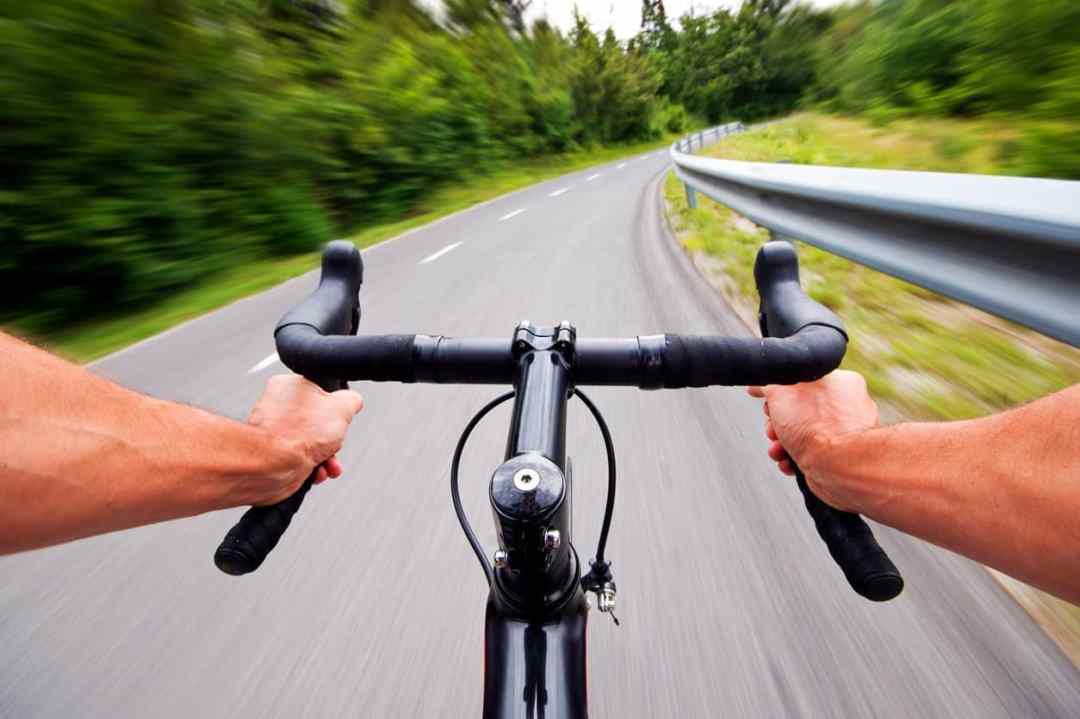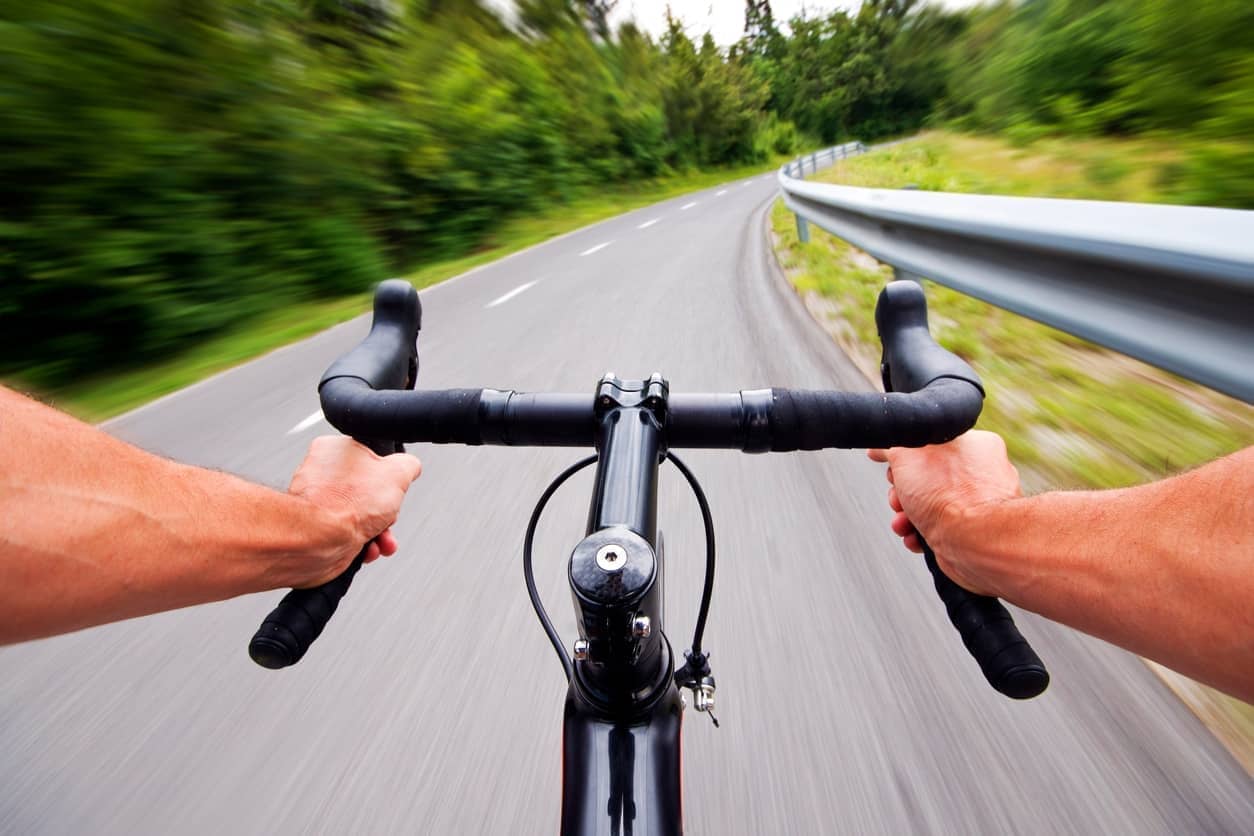Sunday mornings in the Hampshire countryside remind me of a medieval pageant. While marketeers open their stalls and labradors bark, you see hundreds of jousters in gaudy livery steering their two-wheeled chargers along the lanes, trying not to get knocked off.
But while everyone loves a knight, everyone hates a cyclist.
Reader, I must confess: I myself am a member of the brotherhood of Lycra. I don’t shave my legs, I hasten to add. Though the fact that I’ve just written that shows how seriously my tribe takes their pursuit. Since taking up cycling in 2019, I have ridden thousands of miles and competed in several amateur races. The sense of achievement, the thrill of speed, the sublimity of the English countryside, the endorphins that follow intense exercise; for me, these things make life worth living. I’ll likely live a longer, happier life, with a greatly reduced chance of ill health.
But all this does not come without risk. Every week, two cyclists are killed and 83 seriously injured in Britain, according to latest government figures. 56 per cent of casualties occur on rural roads and 83 per cent of victims are male. In an effort to save lives, this year the Highway Code was overhauled in favour of bicycles. Cyclists can now ride in the middle of the road so that there is no room for cars to overtake us, until we deem it safe for them to do so. We are permitted to ride two abreast; we are entitled to ignore cycle lanes. By law, motorists must give us a berth of 1.5 metres when passing. The Department of Transport tells me it’s too early to assess whether this has made the roads safer. But I think it has made them much more dangerous.
Before taking up the hobby myself, I hated the middle-aged man in Lycra as much as the next man. So unlike some of my fellows, perhaps, I feel I can relate to drivers. Think about it from their point of view. Suddenly, we live in a world in which cyclists are entitled to hog the highway, even two abreast, while ignoring the very cycle lanes that were created – at great public expense – for their own benefit. What could be more infuriating? It’s as if the government was intentionally designing a policy to stoke the fires of hate.
A study by the Department of Transport in 2002 – the last time Whitehall looked specifically at this question – found that ‘attitudes towards cyclists and cycling were generally negative’. Drivers, it found, didn’t view them as legitimate road users. Words used by focus groups to describe them included ‘despised’, ‘irresponsible’, ‘dangerous’, ‘arrogant’ and ‘inconvenient’.
Being unable to overtake a bicycle, it found, was a key source of rage, whether the cyclist was behaving responsibly or not
Being unable to overtake a bicycle, it found, was a key source of rage, whether the cyclist was behaving responsibly or not. ‘Where a cyclist is encountered within a context that causes a driver to slow down or deviate, drivers’ estimation of the cyclist’s discourtesy was seen to increase, regardless of the cyclist’s actual behaviour,’ the study said.
Crucially, the researchers concluded – as several other studies have – that hostile motorists are likely to drive in ways that are ‘absolutely petrifying’, increasing the likelihood of collisions.
Attitudes have probably changed for the worse in the 20 years since the study. At the start of the Ukraine war, a photograph was circulating of a man defiantly pedalling past the invading Russian army column in Kyiv. Beneath it, somebody had commented: ‘Cyclists think they own the road even in a f***ing war’. It’s funny because it’s true. Or it feels like it’s true, from the point of view of drivers.
Yet it seems that the subject of hostility between drivers and cyclists – and its impact on driving style and casualties – was not a consideration for the Department of Transport when designing the Highway Code changes. This is a serious omission.
The lanes around Winchester, where I live, are often narrow and bounded with hedges. Visibility is difficult. Cars nose suddenly around corners, leaving bikes shooting down the narrowest of channels between hedge and wing-mirror. In this world of narrow margins and big consequences, the very last thing you need is an enraged driver behind the wheel. One wild acceleration, one reckless swing of the vehicle, and it’s curtains.
My own decision to begin cycling was born out of a road trauma. In 2019, at an accident black spot near Owslebury, I was T-boned by a Land Rover Defender. (Ironically, I was preparing to cover a story in the supposedly more dangerous Syria at the time.) My extensive injuries, which included broken vertebrae and ribs, a lacerated kidney, a punctured lung and a dissected carotid artery, caused me to suffer a stroke. Thank God, I have made a full recovery. But I couldn’t work for four months.
I took up cycling in rehab. In the thousands of miles I have covered since, I have encountered many aggressive motorists. Once, a driver swerved to clip my handlebars at speed. I almost came off. Filled with impotent fury and flashbacks of my hospital bed, I pedalled after him, shouting. He flipped me the finger and gradually outpaced me into the distance.
That is why, as a cyclist, I do not follow the new Highway Code. Rather than riding in the middle of the tarmac, I trace my line along the margins. And although my cycling partner and I form up two abreast when there are no cars about, we fall into single file immediately on sight of one. To do otherwise would feel deliberately obnoxious.
Motorists respond happily when I pull over, with a toot of the horn or a friendly wave. It’s like opening a pressure valve. Anger is instantly replaced by bonhomie.
On one of my regular routes, a white ‘ghost bike’ is tied to a tree beside a junction in memory of a cyclist killed by a car at that exact spot. It serves as a reminder to be considerate of motorists whenever I pant my way past; inviting their ire, however unintentionally, is simply not worth the risk.







Comments